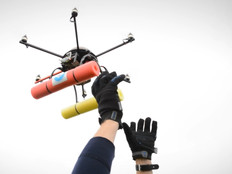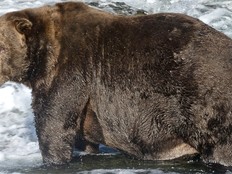Hardware
Drones Search Irrigation Water for Contamination
Farmers are required by law to test their irrigation water for dangerous E. coli, but levels of the bacteria can vary across a pond or reservoir, making current testing methods unreliable. Researchers from the U.S. Department of Agriculture are examining irrigation ponds with drones, hoping to come up with a new standard for ensuring that water is safe to use on crops.
If you enjoyed this video, check out the other videos in our Feds in the Field series:
- NASA Astronauts Leverage 3D Printing Aboard the International Space Station
- The Library of Congress Uses Modern Tech to Digitize American History
- The VA Provides Health Care Via Smartphones
- Robotic Process Automation Does the Work at the Defense Logistics Agency
- Smart Building Technology Saves the State Department Time and Money
- Safe at Home: How 3 Agencies Made the Pivot to Remote Work
- Army Ramps Up Augmented Reality Training with COTS-Inspired Gear
- National Park Service Relies on Webcams to Attract Far-Flung Nature Fans
- Census Bureau Relied on Tech to Make the 2020 Count Happen
- Drones Aid NOAA Scientists with Hurricane Tracking and Animal Monitoring
- Oak Ridge National Laboratory Prepares for Its Exascale Supercomputer
- NIST Aims a Camera at the Mechanics of Fire
Participants
Billie Griffith, Biological Technician/Drone Pilot, Agricultural Research Service/USDA
Matthew Stocker, Research Associate, Agricultural Research Service/USDA
Yakov Pachepsky, Soil Scientist, Agricultural Research Service/USDA
Jaclyn Smith, Biological Technician, Agricultural Research Service/USDA
Video Highlights
- Farmers testing their irrigation water for E. coli can come up with varying results depending on where in the water the test was done, leaving them unable to tell if their water is clean.
- The USDA is using drones to examine irrigation water, hoping to create standardized and reliable ways to test water for E. coli and other dangerous bacteria.
- The drones may be able to spot biological signatures in the water that can be a tipoff to the presence of E. coli, making the farmers’ job simpler.






